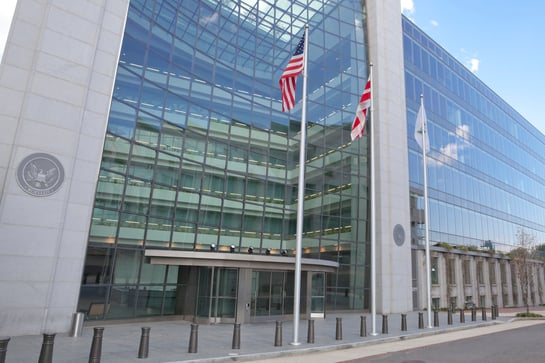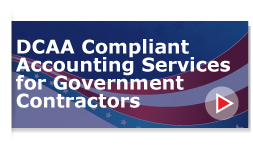A DCAA audit includes a real-time labor evaluation to determine the accuracy of labor charges in regard to contracts, indirect accounts and other costs. Learn what is involved in these evaluations to ensure your accounting procedures will pass the test.
The DCAA Real-Time Labor Evaluation
Part of your DCAA auditor’s job is to evaluate your labor costs. This is performed in several parts, all of which are unannounced ahead of time. These include:
- Analysis of timekeeping practices.
- Interviews with employees.
- Observation of employee workstations.
- Evaluation of internal controls.
- Reconciliation of labor charges.
The evaluation serves the purpose of:
- Testing your compliance with controls.
- Addressing deficiencies in real-time.
- Analyzing current labor charges and cost allocation practices.
The auditor is also responsible for collecting data that will be used to support incurred costs audits performed later in the audit process. The auditor is charged with determining the accuracy of your labor charges to all cost objectives.
Labor audits are conducted on a real-time basis to avoid memory lapses on the part of employees and collect current data.
Preparing for the Real-Time Labor Audit
Because real-time labor audits are unscheduled, you need to keep your accounting and human resources paperwork updated. To be prepared, keep a list of current employees and their assigned workstations and a copy of your timekeeping procedures. If you have multiple locations, ensure that each location has copies of the appropriate paperwork. Each of your locations will also need a point of contact and alternate point of contact in case of absence. If you employ any telecommuters, you’ll need to provide the procedures they use.
For every work location, the main objectives for the auditor are to:
- Verify the existence of employees.
- Verify that employees are present.
- Verify that employees perform jobs in the appropriate job classifications.
- Determine if labor charges are appropriately assigned to cost objectives.
- Determine if the work performed and the recorded charges are fair representations.
The auditor will use various methods of data collection but will primarily be conducting interviews with employees at their workstations and then asking questions to clarify or confirm information obtained from the interviews. Auditors may question direct supervisors, other management or your accounting personnel to clarify and confirm information. For multiple locations or contractors with many employees, a team of auditors may be present in order to make the interview process go faster.
The Procedure for the Real-Time Labor Audit
When the auditor arrives on site, he will request to meet with your point of contact. Next, the auditor will ask for a list of employees and workstations and request to interview your employees at their assigned workstations. Interviewees will be asked for:
- Current job titles.
- A copy of the current time sheet or to display their timekeeping application if digital.
- Name and description of current projects.
- How long they have worked on current projects.
- The charge numbers or accounts used for timekeeping.
- Percentage of time spent on each project.
- The procedure used for time sheet revisions.
Employees may also be asked for employee identification numbers, written timekeeping procedures, and written descriptions of projects or authorization procedures. The focus of the employee interview is to verify the employee’s understanding and use of correct timekeeping and charge number procedures.
Because the evaluation is meant to be conducted in real time, auditors are required to conduct follow-up evaluations for unavailable or absent employees. They must also verify employee time charges for the pay period checked and obtain explanations for any and all questionable procedures or practices observed.
Procedures for Auditing Telecommuting Employees
If you employ telecommuters or implement a work-from-home program, your off-site employees will also be interviewed. Unlike the employee interviews on site, your auditor will ask to speak with the telecommuting or work-from-home employee’s supervisor first. This is to verify not only that the employee exists, but also that adequate supervision is taking place. The auditor will then conduct an interview with the employee by phone to discuss:
- Off-site work procedures.
- Specific work the employee performs.
- Charge numbers for work performed.
The auditor may request a follow-up visit.
After the Evaluation
When the interviews and audit are complete, the auditor will discuss the results with you via an exit conference. If deficiencies exist, you’ll receive a draft version of the findings. You’ll also be given an opportunity for a written or oral response, which will be included in the audit report.
Some of the common deficiencies reported are:
- Absence of current time sheets.
- Lack of employee awareness of time sheet revision methods.
- Unapproved time sheet revisions.
- Time sheets completed in advance of work completion.
- Time charges not representative of work performed.
Steps to Take for a Successful Outcome
According to Law360, a leading legal news consortium, contractors can prepare for audits and correct deficiencies by following these steps:
- Engage with auditors: If deficiencies are found, be willing to ask questions and show that you are dedicated to correcting the situation.
- Keep good and current records: Mistakes may happen, but when you keep your records updated, you’ll save time in avoiding and correcting any problems.
- Document internal controls and accounting systems: Your accounting system is the foundation of your internal controls, so document your accounting processes for visibility and credibility.
By preparing from the start and keeping your accounting records up-to-date, your first real-time audit can proceed smoothly.
Sources:
http://www.dcaa.mil/DCAAM_7641.90.pdf
http://www.law360.com/articles/689963/fraud-indicators-provide-valuable-lessons-for-contractors















